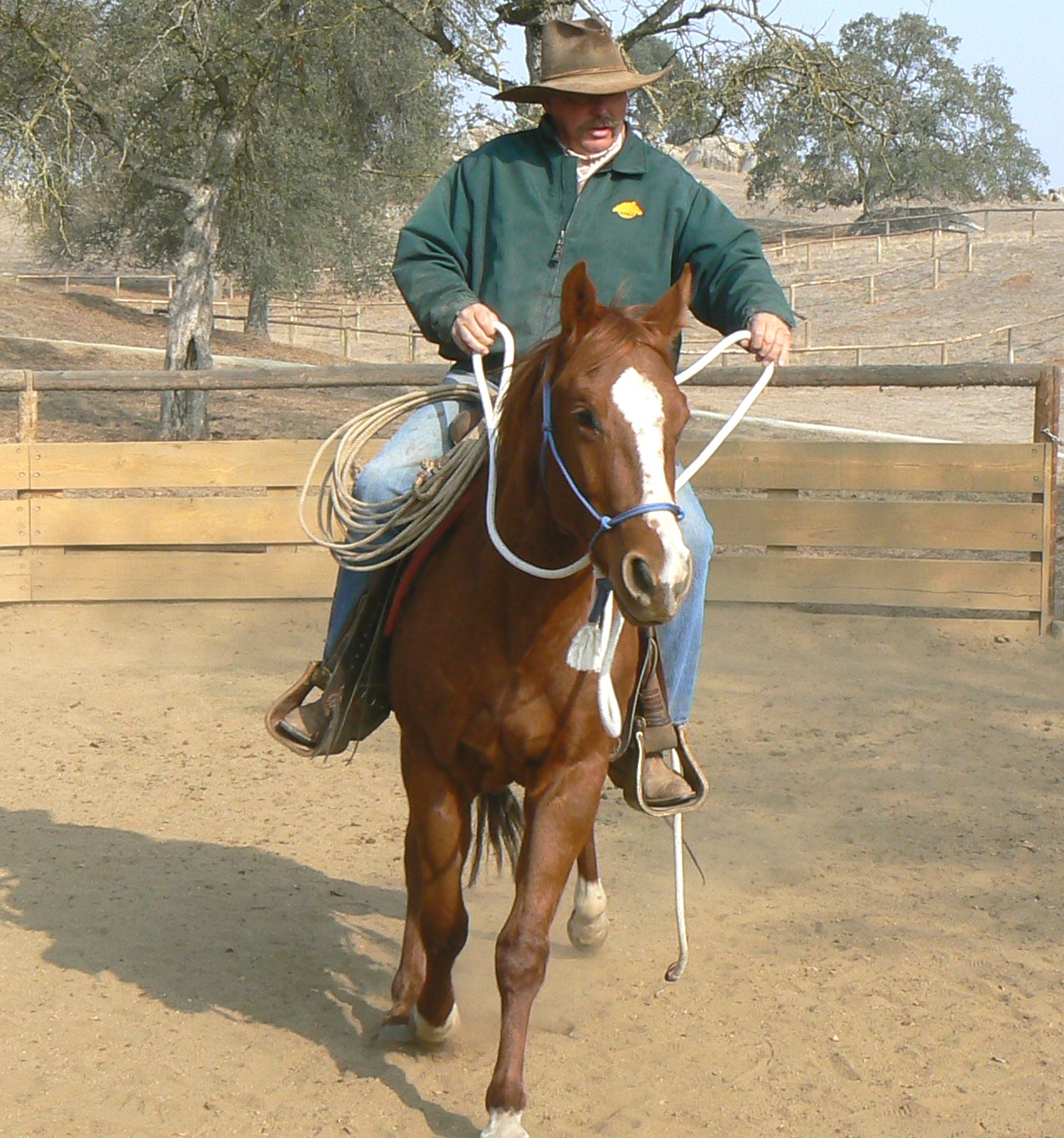 Three
simple moves to help your horse understand you
Three
simple moves to help your horse understand you Three
simple moves to help your horse understand you
Three
simple moves to help your horse understand you
These days we can find many well qualified and
experienced clinicians and trainers showing really wonderful techniques and
patterns, and getting great results with their horses and their student’s
horses. Every chance I can I go out and
ride with people who ride much better and get more from their horse than I am
capable. I get to ride with Pat Parelli,
Martin Black, Doug Williamson & Russell Dilday when he was in
California. While soaking up all that I
can from these extraordinary individuals, I began noticing a commonality in
them and everyone else that was succeeding with their horsemanship.
Step – 1 They know how
to reward the horse with a release, usually by rubbing or stroking.
Step - 2 They know how
to apply steady pressure with a lead line or rein.
Step - 3 They know how
to apply rhythmic pressure to support the steady pressure.
There are many, many books, videos, and lessons
teaching us how to learn these three moves.
The problem that I’ve seen over the years is “so now that I know about
it, how do I use it?” It’s actually
pretty simple, it’s just not easy to do.
The reason that it’s not easy is explained by Dr. Robert Miller of
“Early Learning” fame. Motions that feel
right to us are usually conflicting to the horse and vice versa. Bob says that’s because of the Prey/Predator
conflict within the species. Well, we’ve
all heard that for over 30 years. How do
we overcome this difference? I like how
Pat Parelli says that since we have intellect, we can observe, learn, and then emulate that which seems meaningful to
our horse.
Here is the pattern that serves me well. I had to learn this. It did not come natural to me.
I first get my horse’s attention by merely moving
softly. I may rub, I may lift my arm, I
can do most anything that brings a little life to my body. Step (1) above
When I get an acknowledgement from my horse, ear tips toward me, head elevates a little, anything that signifies that he is aware that I wish for a transition. I then apply steady pressure with the lead line, or the rein, or maybe my leg. Whatever you feel should be meaningful to your horse to suggest a transition. Step (2) above
All of us by now know to release the pressure as in
step (1) above.
Here is where the intellect part comes in. If we don’t get the transition that we asked
for, most of us feel like pressing the pressure firmer, and most of us have
experienced the horse then pushing against us even more. What helps the horse most is to now apply
rhythmic pressure. Step (3) above; then release and reward Step (1).
One of Pat Parelli’s mentors, Ronnie Willis, used to tell me over and over, “Dave, some times all they need is a little more information.” Every time I feel like more pressure on the rein, or squeezing harder with my leg, or leaning on the lead line, I hear his voice and I add a bit of information with some rhythmic pressure.
The key to success with this is to not replace the
steady pressure but to add rhythmic pressure to the steady pressure.
When my horse is on-line, I’ll pick up the lead line
and apply a feel with steady pressure.
If my horse expresses any opposition, I’ll swing the tail of the lead
line or put rhythm in my stick. I do my
best, which doesn’t always work, to not change the feel on my lead line. When my horse responds to my request I cease
the rhythm and reward with a release.
When riding I’ll apply steady pressure with a
rein. Once again, if my horse doesn’t
respond, I’ll add rhythm with my mecate or with my romal depending on whether
I’m in a snaffle or hackamore or on into the bridle. I do my best to not replace the steady feel
on the rein with the rhythmic motion.
The important thing to take from this is that the rhythmic pressure is
annoying to a horse and that they will work out a way to avoid it. If you are persistent with the steady
pressure while adding the rhythmic, they will soon respond more to the steady
looking to avoid that annoying rhythmic.
As Ronnie Willis said “Sometimes all they need is
just a little more information”. Not a
lot, not jerking, not banging; but merely adding some rhythm. Give it a try.